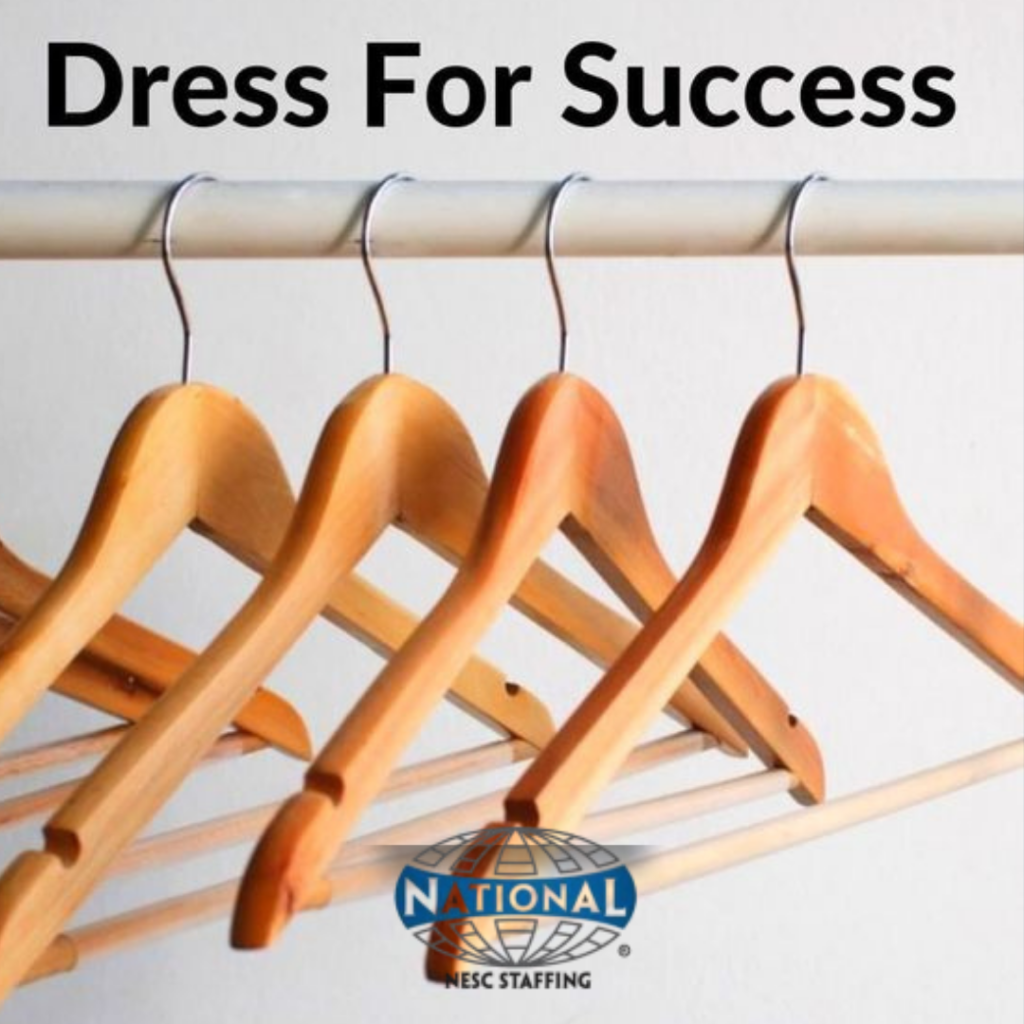
What Does it Mean to “Dress for Success”?
“Dress for Success” was originally the title of a 1975 book by John T. Molloy about how clothing affects personal and business success. It became a bestseller and he followed it up with The Women’s Dress for Success Book. These books promoted the concept of “power dressing”. Power dressing is historically a term used most in the ’70’s and 80’s, and while it’s not a frequent term anymore, the concept is still popular. The old advice of “dress for the job you want, not the job you have” is still common, but it’s not exactly helpful. What is helpful is knowing that what you wear will affect your mental and physical performance. Your style of dressing for success depends on two things: where you are in your career and which industry.
Industry Dress Codes
Companies that encourage creativity allow more colorful attire, while finance companies are only now coming around to business casual. Now that J.P. Morgan Chase & Co. allows their employees to wear business casual attire all the time, it’s worth the effort to find out what you can about the environment before your interview or first day.
If You’re Just Starting Out: Blend In
If you’re interviewing or just starting out at a new position, the first step is to look like you belong there. This is more important than dressing like the boss, because in the beginning you’re just trying to get get your bearings. Think of the environment you’ll be in first and dress for that. Most office positions will require a blazer of some kind, although a tie or heels might not be necessary depending on the industry.
Want a Promotion? To Be Taken Seriously, Dress Seriously
If you want a promotion or a raise, you’ll need to promote yourself, both with your work performance and appearance. Workplaces that interact with customers or clients are usually more conservative in their dress code. While your work should be the only thing judged, the truth is that humans are visual animals. You can use this to your advantage by wearing blazers, blouses, button-down shirts, dress pants, or slacks. This is worth the investment because how you dress will actually change how you work.
How Formal Clothing Changes Your Thinking
If you want to be the big-ideas person at work, wear a suit. A study in 2015 published in Social Psychological and Personality Science asked subjects to wear either formal or casual clothes before several cognitive tests. Those in formal business clothing had higher brain activity, because they felt more powerful. They only felt more powerful because they subconsciously associated their own suit to other powerful people wearing suits. Wearing formal business attire increases your ability to think abstractly, which is important for creativity and long-term strategizing.
Easy Strategy for a Capsule Wardrobe on a Budget
Most people don’t have the money to go out and buy a new wardrobe, so here’s the easiest and cheapest solution to make the most of what you already own: simplicity. To keep from overspending, think of yourself as a painting in a frame: accent without overwhelming. Your pants/skirts and jacket are the frame, so buy those in neutral colors. These are usually the priciest clothes and you’ll wear them often, so getting them in neutral colors allows you to wear them with any shirt, tie, or accessory, thus allowing the most use. Be sure to get pants/skirts that either match or complement that color. With shirts or ties being the main colorful part, you’re now free to show some personality, depending on your work environment. Limiting the pieces you buy in color will also free you from too many decisions in the morning, while still making you look professional. This frees your budget to get any shirts or blouses in some colors and to spend a little bit more to get accessories, like ties, necklaces, etc.
Pro Tip: if you’re stuck buying cheaper shoes or bags than you would like, buy them in black. Anything pleather or man-made materials looks more expensive for longer in black because it will be harder to see the inevitable creases.
Women’s Professional Attire:
Suit: Navy, black, or khaki, in solid colors. Skirts are knee-length, worn with tan hosiery. Pants are crisp. Shoes are closed toe and have a moderate heel.
Important details: limited jewelry and perfume, neat hairstyle, classic manicured nails, portfolio/briefcase
Avoid: anything trendy, sexy, skintight, wrinkled, or ripped. Nothing with spaghetti straps. Avoid excessive perfume, excessive makeup, excessive jewelry.
For Business Casual, wear bright colored shirts with bigger and more unique jewelry and accessories. Shoes can be open-toed heels, stilettos, pumps, or closed kitten heels. A blazer or sweater isn’t required.
Men’s Professional Attire:
Suit: Navy, black, or khaki, in solid colors. Solid color button-down shirt, in white or various blues. Men in conservative environments generally wear blue, which is thought to be associated with loyalty.
Important details: neatly trimmed nails, very limited jewelry, neat hairstyle.
Avoid: anything trendy, sexy, skintight, wrinkled, or ripped. Beware of strong aftershave, ties with patterns, depending on how conservative your industry is and the company
For Business Casual: Slacks/khakis or dark jeans, button-down shirts, and sweaters in a variety of colors and patterns, with relaxed but elegant shoes. No sandals or boots.
Need more help? Check out where we Translate the Business Casual Dress Code or Decode the Tech Industry Casual Dress Code
Addressing Salary Expectations in a Job Interview